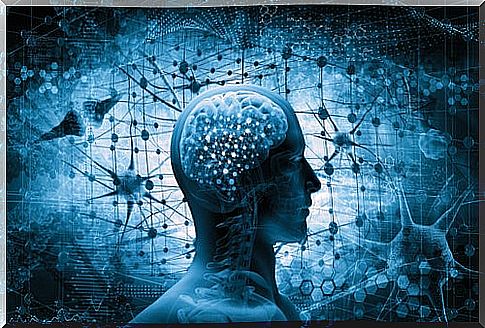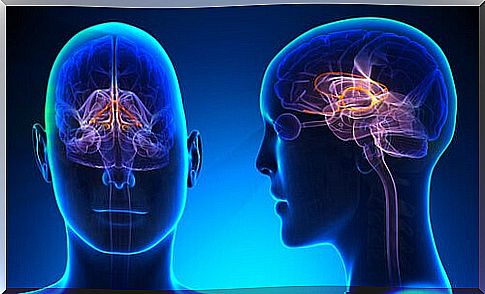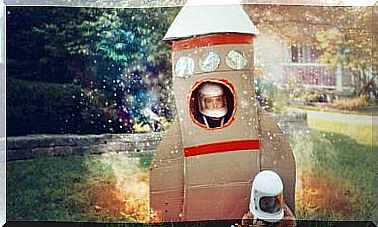How The Brain Works In Critical Situations

The brain in critical situations has a different way of responding to the one we use every day, it activates an ultra-fast response neural system that sets off a series of behavioral and hormonal responses that aim to survive. This way of functioning is given to us, it is innate and is different from the one we consciously use every day.
In other words, our brain is in charge of supervising that everything we do goes well: it is the organ that has most of the responsibility for the dynamics of our bodily functions and behaviors. In many circumstances, our brain functions in a conscious and procedural way (putting into motion previously learned functions, such as walking and talking).
However, this mode of functioning is not the only one available in the brain. In critical situations, where it detects a risk or threat to life, the brain works with other neural networks in charge of starting the survival system. Our brain is prepared to make decisions immediately in the event of identifying an imminent danger.
In this sense, we have a system of neural networks designed to function as an alarm system and it is this system in charge of making decisions in critical situations. This alarm system is not perfect and can sometimes push us to make wrong or poorly adjusted decisions. Therefore, we will go on to see how the brain works in critical situations and what consequences the activation of the alarm and survival system can bring.
Limbic system of the brain: the system to turn on the alarm
The human brain has a neural system responsible for emotional processing and responses related to fear and anxiety; we are talking about the limbic system, located in the temporal lobe. In the limbic system, we have a structure specifically dedicated to the detection and processing of danger: the brain amygdala. The amygdala is connected to different areas of the brain and has the ability to trigger rapid and intense behaviors.
Virtually all mammalian species have an innate flight-fight-paralysis reaction to dangerous stimuli, and this reaction is triggered by the amygdala. The alarm reaction can be consciously “turned on” by realizing that there is a serious danger, or unconsciously by means of a cerebral “shortcut”. In other words, there is the possibility that before we know it, the survival system has already been turned on and that the amygdala triggers different responses.

The possible responses of the brain in critical situations
In the first place, the brain in critical situations can give the order to flee, and this order will not be meditated. That is, our brain will not ask if we think it is appropriate to flee or remain in the situation. For this reason, responding in times of danger can make the situation worse, because we make reflexive decisions without measuring the possible consequences.
The function of flight is simply to get away from danger to seek shelter and help, and in a critical situation it can lead us to escape from a place without detecting the dangers we face by choosing that option, such as crossing a street without looking at the traffic or jump off a balcony.
Another possible response is the fight or fight (in English fight ) and is the response by which the individual gives everything for his life or to eliminate the dangerous stimulus. When the sympathetic system is activated, this fighting response dramatically increases the levels of adrenaline in the blood and an acute stress response is generated that makes the muscles more resistant, the skin less sensitive and the lungs have greater capacity. All this translates into greater resistance and strength.
Third, another response may be paralysis or perplexity, that is, losing the ability to react, hiding and being unable to do anything. The paralysis -as a response- seeks that the threat passes without noticing our presence. Likewise, it is very important to bear in mind that if this response is unleashed, the person does not have the ability to activate their locomotor system (of muscle movement) and, therefore, remains immobile.
In this way, the brain in critical situations has a survival system that is activated ultra-fast and unconsciously, in milliseconds, and can lead us to give an inaccurate response in said situation. In fact, many times the alarm response increases the danger and that is why there is a whole group of professions in charge of training people so that they know how to act in an emergency.
Consequences of activating the alarm and survival system
The sure and immediate consequence of going through a critical situation, once it is over, is physical and emotional exhaustion. This extreme fatigue is the result of the wear and tear caused by going through a situation of danger or extreme delicacy and can last more than a day, and can even be maintained despite sleeping and resting. This happens because all the neural and physical resources were used to survive and overcome the situation and the last thing that takes place is the recovery of the lost energy.

Another possible consequence, in addition to exhaustion, is the imprint that the critical situation leaves in our memory. This occurs because the amygdala and the hippocampus (the structure responsible for fixing new learning and creating memories) work together. Thus, the amygdala activates the hippocampus so intensely that the memory is fixed with great force. For this reason, critical situations tend to be remembered for a lifetime and in good detail.
Likewise, another possible consequence of brain activation in critical situations can be Post Traumatic Stress Disorder (PTSD). This condition develops when the level of physical arousal is extremely high and the main emotion is intense fear, although it is not always when a critical situation is experienced that PTSD develops.
On the other hand, this syndrome requires specialized psychological therapy since it is characterized by flashbacks of what happened, moments of great sadness and the perception of a constant threat in the closest environment.
Finally, it is important to remember that the brain can learn to respond more adaptively to critical or dangerous situations. Training, protocols for action in emergencies and self-defense strategies are key elements that can help us improve our survival response.









